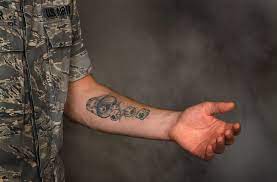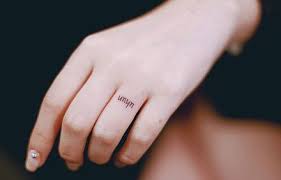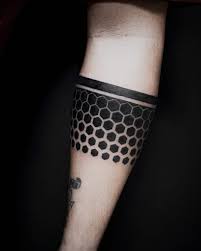
Tattoos on the neck
Tattoos on the neck can be an excellent way to showcase your individuality. From subtle pieces that capture your essence to larger and bold designs that represent strength or love for yourself, getting inked here can help express who you are and create lasting memories.
The Air Force recently modified their tattoo policy, permitting service members to have up to one-inch-large Tattoos on both neck and hands to recruit and retain new airmen and guardians during a recruitment crisis. However, service officials continue to prohibit tattoos and body markings that violate uniform standards, such as those seen as offensive, commonly associated with criminal gangs or extremist/supremacist organizations, or which advocate sexual, racial, or religious discrimination. Service members can apply for waivers from these restrictions.
Navy recruits may still get neck tattoos; however, they must remain hidden behind their ears or hair when in uniform.
Tattoos on the face
Though the Air Force has liberalized its tattoo policy, any artwork considered offensive and discriminatory (e.g., naked mermaids on the chest or huge curse words across the chest) remains prohibited; additionally, gang or extremist group symbols cannot be depicted with tattoos either depicting them directly or representing them through images on body art are banned; one neck/behind-the-ear tattoo and one ring tattoo per hand are permitted, however.
The military does not permit recruits or guardians of recruits to wear Tattoos on their head, face, tongue, lips, or scalp; permanent makeup; visible tattoos when wearing uniform shirts and any tattoo that offends moral standards will not be tolerated, and any attempt at covering such Tattoos with band-aids or makeup is forbidden unless medically necessary for treating conditions or illnesses.
Tattoos on the hands
Tattoos on your hands can be an expressive way of showing your individuality while simultaneously serving as a source of pride and strength. A skull tattoo could represent death, while adding a halo around an Eye of Providence design could signify guidance and protection.
Air Force regulations do not permit tattoos below an open-collar uniform on the chest or back; however, one ring tattoo on each hand is allowed. This must be no wider than 3/8 of an inch and located between the knuckle and joint on one or both hands.
The military prohibits tattoos that interfere with morale, good order, or discipline and bring discredit upon them; however, soldiers can file for an exception if their tattoo is for religious purposes. Furthermore, recruits should remember that water exposure may affect tattoos on hands over time and need touch-ups regularly.
Tattoos on the wrists
Although the service branch has relaxed its tattoo policy, it remains stringent regarding what designs can be inked onto one’s body. Tattoos on any area of the head, face, scalp, tongue, or lips, as well as those associated with criminal gangs or extremist groups, as well as any designs advocating religious discrimination, are prohibited; decisions regarding such bans are made by commanding officers within their chain of command.
Recently, the service branch announced that Guardians could have one neck or behind-the-ear tattoo no more than one inch long and must not be visible while wearing an open-collar uniform.
Tattoos on the wrists are popular among service members as they are easy to hide and less noticeable than chest or arm tattoos. Plus, their relatively pain-free application is due to thicker skin that protects more bones.

